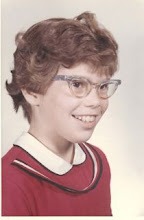Friday, November 30, 2012
Friend Friday
I feel blessed to count Ann Whitford Paul as a friend. She is one of the hardest working writers I've ever met and one of the best picture book writers around. She was a student of Myra Cohn Livingston's; poetry courses through the veins of every story Ann creates. On top of all that, she is a diligent reviser! So I asked her if she could give three revising tips for us. I think much of what she shares below applies to any kind of writing, not just picture book texts. Take it away, Ann!
Character is everything, especially these days when that’s what publishers are asking for. Make sure that yours have child appeal. Also don’t have a huge cast of characters. One or two is best, four, the maximum.
I discovered with the help of a fabulous consultation with Emma Dryden that naming a character is incredibly important. Changing Little Pig, Big Pig and Biggest-Pig-of all to Pattie, Mattie and Penelope somehow opened a door to their personalities. It inspired me to work to make sure each spoke in a different voice. For example, now Pattie always speaks the same word, “Nooooo.” Changing dog characters in another story from their breed names to something more distinctive such as Bulldog to Willie, Poodle to Francoise, Dalmatian to Dag and Chihuahua to Teacup was similarly helpful. Teacup is a squealer now and so excited that she often repeats words. I wouldn’t have thought of this change without coming up with the names. With both stories, the names themselves increased the humor in each. Spend time making sure that your names are the absolute best you can come up with. Play with lots of possibilities. Then let those names fill you in on character and revise to give your manuscript new life.
Also make sure that your characters aren’t perfect children. We all are imperfect. We all have strengths and weaknesses. Your characters should be the same. For example my character Willie in the story mentioned above loves to help. That’s good. The problem is that he’s too enthusiastic and goes overboard each time. When your characters are fully human (even if they’re animals) your reader will more easily identify with them and better yet, love them.
It seems obvious that as an author you should know what you want to say in your story and that your story expresses that concept. However, way too many stories meander without a core. They start with one problem and end up solving another. It’s critical that when you’re revising, you think about what you want the reader/listener to come away with after hearing your story.
When you’re revising it’s time, if you haven’t done it before, to state in one sentence what your story is about. Once that is done, you can check to make sure everything in the picture book relates to that sentence. Remember picture books introduce children to story. Therefore what you write can’t be complicated. Save those different plot twists and large casts of characters for your middle grade novel. Also create a story that has relevance for your audience. For example—your picture book listener has no interest in gathering data about the latest election polls. Neither does she care about the trials and tribulations of preparing for a first date.
Last of all . . . language, language, language. It is critically important that the language of your story expresses the sentiment and activity of your text. If you’re writing a good night book, stay away from words like pop and block. Don’t name your characters Kate or Dick. Don’t write short sentences with loud sounding words. All of those belong in a noisy book, an active book, a get-up and jump around tale.
During revisions consider each and every word. Would walk be better here than stroll? Can you add some onomatopoetic words like buzz and zip to your text? Kids love to “read” those words out loud. Consider each sentence. A long rambling sentence might work perfectly for description of a lazily flowing river, but would slow down the action of a chase scene. Remember picture books are the closest form of writing to a poem. Even though they don’t have to rhyme, they must be poetic. They must be written so the worst actress can read with comfort and expression. If the story works, but the language doesn’t, your manuscript will fail. Every word counts.
Ann Whitford Paul is the author of the award-winning Eight Hands Round, and All By Herself, as well as If Animals Kissed Goodnight, Word Builder, and a series of books with a Spanish language flair: Manana Iguana, Fiesta Fiasco, Count on Culebra and Tortuga in Trouble. She is also the author of the extremely useful and concise craft book, Writing Picture Books.
Subscribe to:
Post Comments (Atom)



Kirby, a great question for Ann, and as always, Ann has a great answer.
ReplyDeleteANother good one, Kirby!
ReplyDeleteThanks for sharing. Will post a link on to my colleagues in SCBWI-Michigan.
ReplyDeleteFantastic!
ReplyDeleteThanks for the excellent advice.
ReplyDeleteSuch wonderful advice! Thank you!
ReplyDeleteGreat advice Kirby. Thanks for sharing this. The information is accurate for illustrators too! -
ReplyDeleteI liked the part about the importance of names and wonder if I live up to the character of my own name!
ReplyDeleteAnnie, thanks for sharing your knowledge and expertise with all of us! You've honed this post down to some of the most powerful suggestions.
ReplyDeleteAnnie, thanks for sharing your knowledge and expertise. You've honed this post down to some of the most powerful ideas and suggestions!
ReplyDeleteWhat a terrific post. Such wise advice, Ann! Thanks to you, Kirby, for your terrific blog and for Friend Friday!
ReplyDeleteAs always, Ann, your advice is brilliant. And thanks to you, Kirby, for your wonderful blog and for hosting Friend Friday!
ReplyDeleteThanks so much for sharing! I was inspired to improve some character names!
ReplyDelete